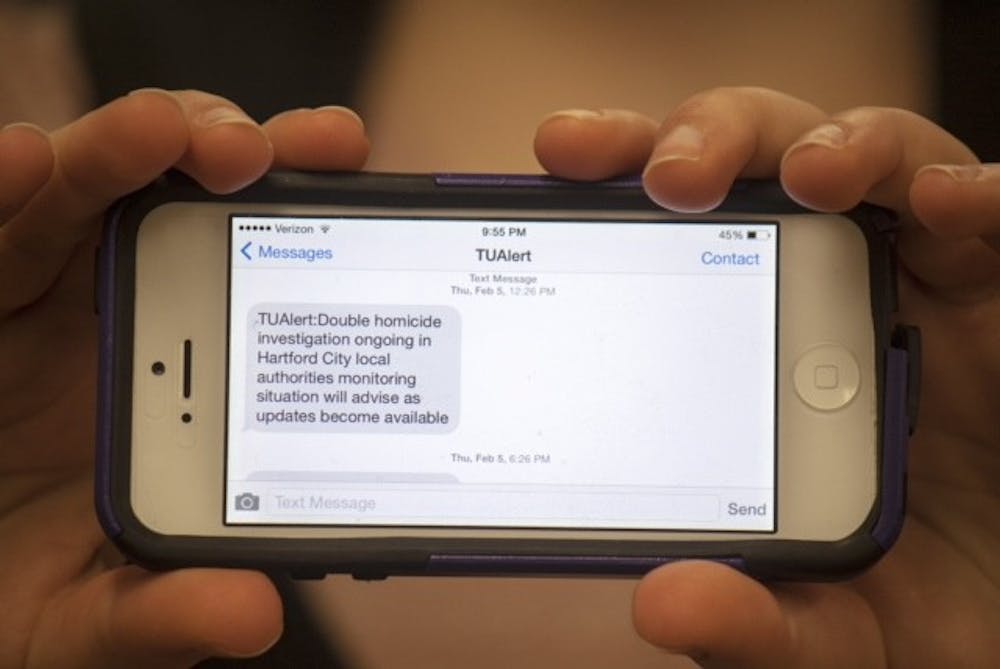By Julia Oller | Echo
One by one, the doors of every residence hall clicked shut. Swallow, Breu, Gerig and Sammy locked at 1 p.m., Olson at 4:15 p.m. The Echo was unable to verify when the other residence halls locked their doors.
On Thursday, Feb. 5, 59-year-old Charles R. Whittington allegedly shot and killed a 14-year-old girl and her 40-year-old father in Hartford City. Authorities arrested Whittington at his house several hours later.
At Taylor, Campus Police contacted all Residence Life personnel, asking them to ensure that dorm entrances were locked. A TUAlert text message and email announcing the shooting also went out to all subscribers at 12:30 p.m.
Although several local schools went into lockdown, Taylor stayed open, a decision that Chief of Police Jeff Wallace was made after gathering all available information from the police forces directly monitoring the case.
"There was never a point where there was a danger to our community," Wallace said.
Even though no active threat existed, Wallace placed extra officers on patrol and notified multiple university personnel to watch for any unusual activity.
Sophomore Ellie Erehart was working the front desk in Olson when assistant hall director Tianna Clark urgently asked her to lock the front doors.
Erehart said that while students were scared, many were also upset that they couldn't enter the building without swiping their IDs. However, she believes the call to take precautions without closing the school was the right decision.
"It would be too much to shut down an entire campus, but it's good that we're doing something, that we're aware of it," Erehart said.
Awareness is the most important way to stay safe in any and all situations, according to Wallace. On a small campus, suspicious behavior tends to stand out and reporting it to campus police immediately protects against crisis situations.
Education on safety techniques for everyone on campus, not just students, also improves disaster preparedness. Due to the increase in active shooter events over the past decade as reported in a 2014 study by the Federal Bureau of Investigation, methods of training to handle these situations have changed drastically over the past 10 years.
There is currently no information specifically regarding active shooter safety in the Student Handbook or on the Taylor website Safety Information and Procedures page. According to Wallace, however, Taylor's plans for handling crises is updated every two years. He plans for the most recent document to be completed this year.
One addition to Taylor protocol involves training faculty and staff to respond to threats of violence. Wallace has held several sessions to train Taylor employees in crisis prevention and management.
Including all members of college campuses in protection procedures follow the "whole community" approach to safety recommended by the Department of Homeland Security.
"Everybody has a role to play," Wallace said. "That's the message we want to try to get out."
Wallace also teaches a self-defense class several times throughout the semester for anyone who's interested. Much of the course focuses on what he calls "situational awareness"-paying attention to the surrounding area in order to avoid harmful situations in the first place.
Despite the fact that Taylor's remote location provides a natural buffer against serious crime, this doesn't negate the potential for violence.
"We live in a world where we can't guarantee that bad things don't happen, but we can prepare and train and educate as best as we can against them," Wallace said. "This is a very safe community, and we want to keep it that way."





